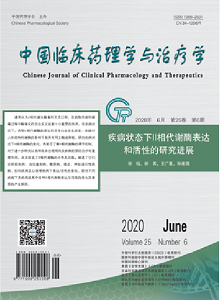Minocycline inhibits inflammatory corpuscle mediated pyroptosis and improves cognitive ability in Alzheimer's disease mice
SHENG Yongjia, LI Wenyan, ZHU Diwei, WANG Jin, GU Yanling
2020, 25(6):
625-632.
doi:10.12092/j.issn.1009-2501.2020.06.004
 Asbtract
(
744 )
Asbtract
(
744 )
 PDF (1758KB)
(
471
)
References |
Related Articles |
Metrics
PDF (1758KB)
(
471
)
References |
Related Articles |
Metrics
AIM: To study the mechanism of minocycline (Mino) in inhibiting inflammatory corpuscle NLRP3-mediated pyroptosis and improving cognitive ability in Alzheimer's disease. METHODS: Lipopolysaccharide (LPS) was used to induce PC12 to construct a model of neuronal pyroptosis. The cells were divided into control group, LPS group and LPS+Mino group. CCK-8 assay was used to detect cell viability, flow cytometry was used to detect apoptotic level, and Western blot was used to detect the levels of key proteins NLRP3, ASC, Caspase-1 and pro-Caspase-1 in NLRP3 corpuscles, as well as the levels of GSDMD and p30-GSDMD. Enzyme-linked immunosorbent assay was used to detect the expression of interleukin-1β, interleukin-18 and tumor necrosis factor-α in culture medium. APP-PS1 mice were randomly divided into control group and experimental group. The experimental group was given intragastric administration of minocycline 50 μg. The cognitive and memory abilities of mice were tested by Morris test before and 3 weeks after administration. The expressions of NLRP3, ASC, Caspase-1 and pro-Caspase-1 in hippocampal CA3 region were detected after execution, and the expressions of inflammatory factors such as IL-1β, IL-18 and TNF-α were detected. RESULTS: Minocycline could inhibit LPS-induced pyroptosis. Cell viability in LPS+Mino group was significantly higher than that in LPS group, and the apoptotic rate was significantly lower than that in LPS group (P<0.05). The expression of NLRP3, ASC and Caspase-1 in LPS+Mino group was lower than that in LPS group, while the expression of p30-GSDMD was lower than that in LPS group, and GSDMD was higher than that in LPS group. The levels of IL-1β, IL-18 and TNF-α in culture medium were lower than those in LPS group, with significant difference (P<0.05). In animal experiments, minocycline could significantly improve the cognitive ability of mice. In Morris experiment, the latency of mice was shortened, which had statistical significance compared with the control group (P<0.05). At the same time, the number of times of mice crossing the platform increased significantly compared with the control group (P<0.05). The expression of key proteins NLRP3, ASC and Caspase-1 in NLRP3 corpuscle of mice in experimental group was lower than that in control group, while the expression of pyroptosis executive protein p30-GSDMD was lower than that in control group, GSDMD was higher than that in control group, and the levels of inflammatory factors IL-1β, IL-18 and TNF-α were lower than that in control group (P<0.05). CONCLUSION: Minocycline can inhibit the activation of NLRP3 corpuscle and the occurrence of neuronal pyroptosis, and improve the cognitive ability of mice with Alzheimer's disease.


